Keywords: CSI−4; SCAS; separation anxiety disorder
The Child Symptom Inventory −4 (CSI−4; Gadow, Sprafkin, 2002) is a screening instrument that screens for cognitive, emotional and behavioural symptoms of a number of psychiatric disorders in children. CSI−4 has two forms: one for teachers and one for parents. Each disorder is rated using a scale. The Spence Children's Anxiety Scale (SCAS; Spence, 1997) is a child self-report measure designed to evaluate symptoms relating to six anxiety disorders. Each disorder is rated using a scale. The purpose of this study was to analyse the possibility to predict the presence of the separation anxiety disorder with a probability higher than 0.50, based on the T scores of the scales Separation Anxiety and Generalized Anxiety, separately for SCAS and for CSI−4. We used two samples consisted of children between 8 and 11 years old, one for CSI−4 (N=817) and one for SCAS (N=721). We found that, in the case of the CSI-4, the probability of the presence of the separation anxiety disorder is higher than 0.50 (P=0.778) if the T scores of the Separation Anxiety scale of CSI−4 Parent Form, the Generalized Anxiety scale of CSI−4 Parent Form and the Generalized Anxiety scale of CSI−4 Teacher Form are all higher than 70. In the case of SCAS, when the T scores of the Separation Anxiety and Generalized Anxiety scales are both higher than 70, the probability of the presence of the separation anxiety disorder is higher than 0.50 (P=0.636).
More...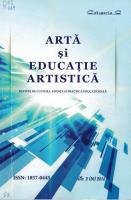
Keywords: mediu educațional; preșcolari cu deficiențe de vorbire; dezvoltare lingvistică; grădinițe logopedice; literație emergentă; pregătire perceptuală; mediere
Studiul de față reflectă rezultatele unei investigații desfășurate în Israel privind influența mediului educațional asupra dezvoltării competențelor de literație timpurii la copiii cu deficiențe de vorbire. Cercetarea are la bază faptul că grădinițele logopedice și cele obișnuite adoptă diferite modalități de inculcare a literației la preșcolarii cu asemenea probleme
More...
Keywords: screening al alcoolismului; CAST; structură factorială; fidelitate; capacitate de discriminare; valoare diagnostică
CAST (Children of Alcoholics Screening Test) is a screening-type instrument which can be used to identify children or adolescents living in families where at least one of the parents has problems with alcohol abuse. The score on this instrument can provide psychologists a first diagnostic impression on toughts, perception, emotions, and experience of children or adolescents, which are related to the alcohol abuse of one or both parents. The current study summarizes some psychometric qualities which CAST proved in a convenience sample of 1340 children, pupils in 7th and 8th grade from ten schools from Iasi city (Romania).
More...
Keywords: non-unitary judicial practice; reparation indemnity
Non-unitary judicial practice. The conditions for granting and the way of calculating the reparation indemnity established by the Law no. 341/2004 in favor of children of martyr heroesThe article presents the different jurisprudential opinions, illustrated with extracts from courts decisions, regarding the conditions for granting and the way of calculating the reparation indemnity established by the Law no. 341/2004 of gratitude for the victory of the Romanian Revolution in December 1989, in favor of children of martyr heroes, accompanied by the author commentaries.
More...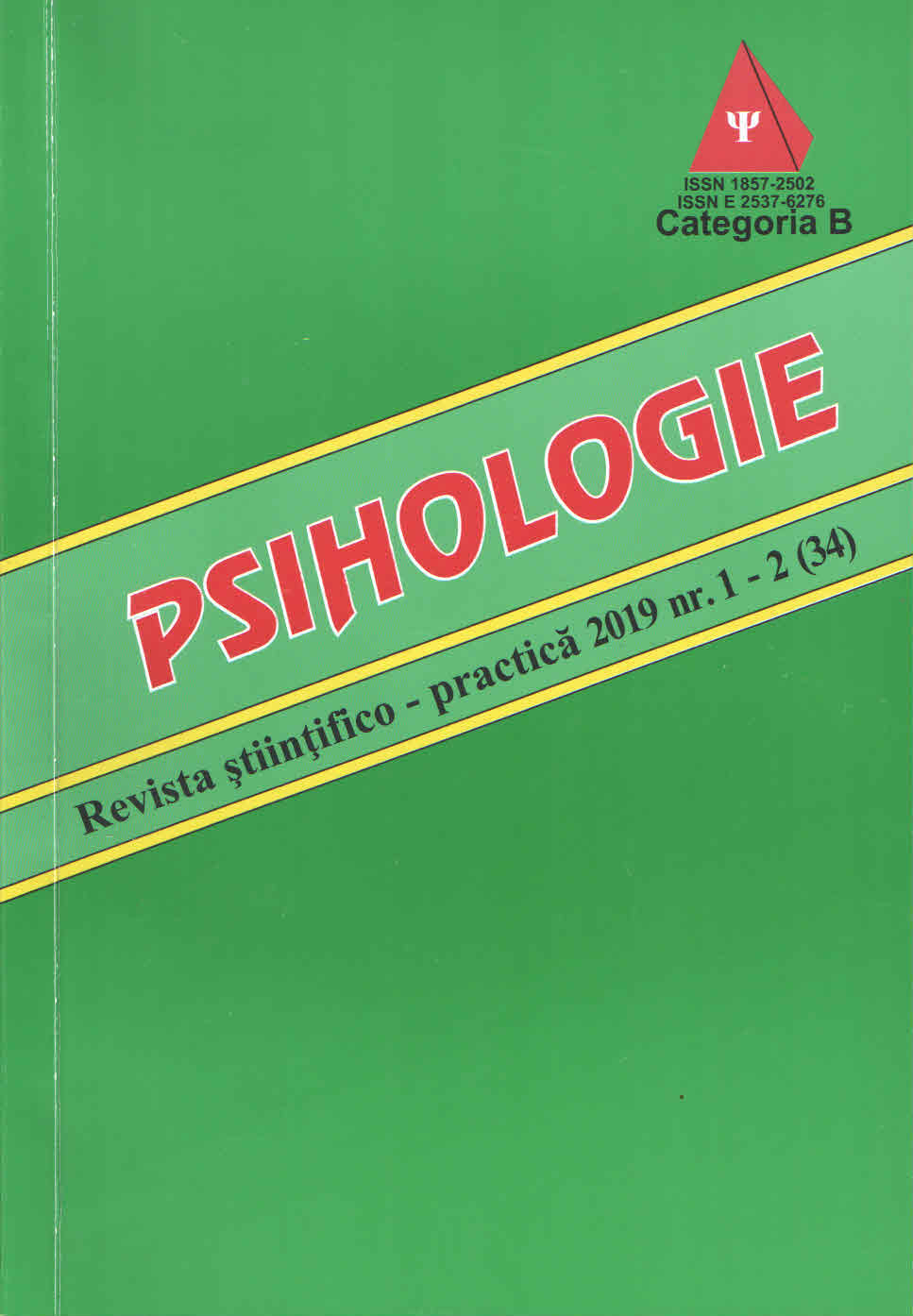
Keywords: learning difficulties; social adaptation; Arab families; intervention program; relationships; school adaptation; behavior; role of women; involvement and integration;
This article performs an intervention program for mothers from Arab Sector of Israel who have children with learning disabilities. The intervention program has helped mothers from Kafr Qasim, Kafr Bara, Tayibe, Tira, Jaljulia, Qalansawe and Zemer, Arab Sector of Israel, to improve the social, emotional and school adaptation of their children.
More...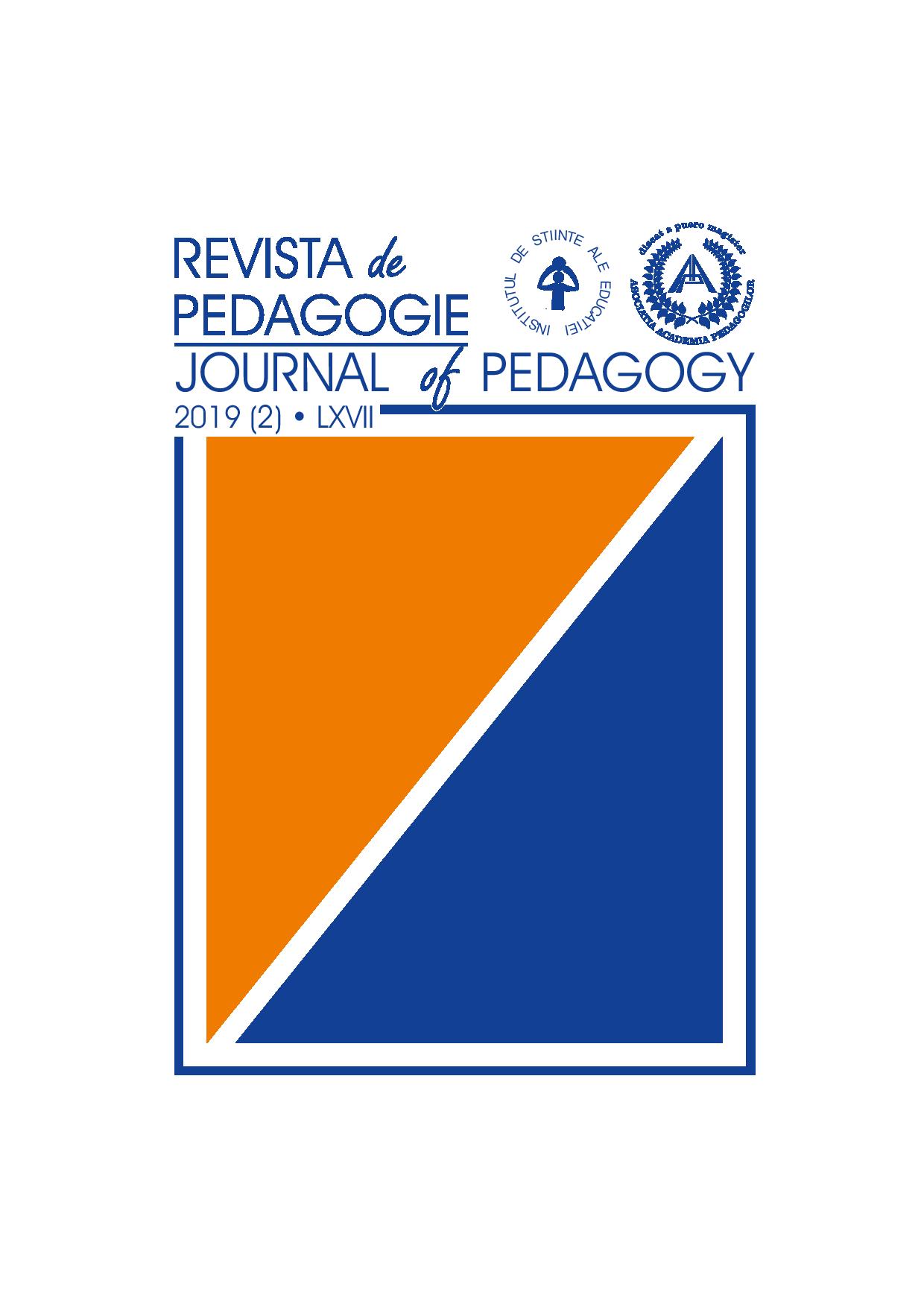
Keywords: autism spectrum disorders; interactions; social skills; swimming; teamwork;
This paper provides a number of aquatic programmes, and critically analyzes methods and techniques used to develop social skills in young children with Autism Spectrum Disorders (ASD). Social skills are interpreted through a ToM theory lens, emphasizing interactions, such as understanding, explaining, predicting, and manipulating the behavior of themselves and others. Based on these elements, the purpose of this review is to study the role of adapted group aquatic programmes and its effect on children with ASD to understand the concept of peers and learning the benefits of two important social skills, teamwork, and relationships. An online search through ProQuest and First Search resulted in seven studies of diverse methodologies. All these studies support the value of these programmes as a means of social skills’ development. Qualitative as well as quantitative data which included, checklists, interviews, and tests, indicated these programmes benefit ASD children’s’ social skills, such as cooperation, communication and increase in self-esteem. Findings suggested that children with ASD have opportunities to make new friends, feel more comfortable in a group and reduce anxiety through swimming. These relationships can continue, as they discover other common interests. More longitudinal studies are needed to develop aquatic activities as an extracurricular activity and the planning process to achieve the intended outcomes. By synchronizing theory with sports activities and teamwork, children with ASD can feel a deep sense of accomplishment upon achievement.
More...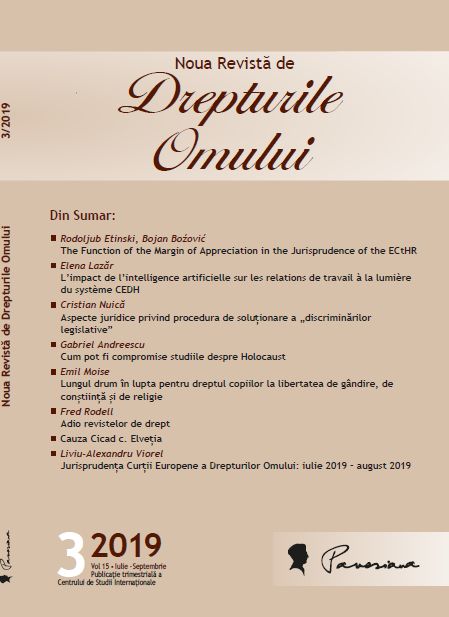
Keywords: rights of children; the superior interest of the child; religious services; religious education; Romanian Orthodox Church;
Among the many elements of religious (sometimes radical) proselytism present in the Romanian public schools – the religious symbols mounted in the classrooms, turning classrooms into chapels for religious services, building churches within school grounds, holding religious services in the vast majority of schools during school hours (including holding communion for children during hours allocated to mandatory subjects, often without the consent of parents and never with the consent of students) – in this study I will focus on the religious services held in public schools in Romania, during mandatory school hours. The study covers the civic efforts spanning 15 years, 2004 to 2019, towards raising awareness regarding this illegal situation. It highlights the complicity of public servants and politicians within the public educational system – from school principals to Ministers of Education – with the activities of the Romanian Orthodox Church that violate the fundamental rights of children.I showed that the public authorities in education don’t respect the fundamental rights of the children enrolled in the public system of education and do not consider the superior interest of the child, although they are required to do so by the laws and the Constitution.
More...Keywords: Civil Law; Legitimate Marriage; Illegitimate Children; Social Control; Moral Values; Interwar Romania
The family based on legitimate marriage has been the norm in all European societies, under the Old Regime. Legitimate marriage ensured the intergenerational transfer of name and property, while cohabitation was seen as posing a serious threat to the social order derived from the law. However, what was really at stake was the status of children resulted from illegitimate or transient relationships; perceived as bastards by society, they were excluded from their father family line, and consequently did not inherit any of his possessions.
More...
Keywords: Holocaust literature; children’s diaries; trauma literature, witness literature; Holocaust in Romania;
In one of my previous articles (Tucan 2020), I showed the great extent of the phenomenon generated by the diaries kept by young children and youngsters during the Holocaust. For these young people experiencing directly the anti-Semite persecutions of the WWII, these diaries were the only way to preserve the direct experience of sufferance in a world haunted by terror. In truth, while most of them did not survive, their written pages made it through history to become authentic papers documenting the horrific universe of the ghettos, of the concentration camps, of the lives spent in hiding and in secrecy. Unlike the genre of memoirs, which encapsulates the story of survival, the diary is the survival itself; they are therefore able to allow us a close introspection into the traumatic experience of the Holocaust and become vital documents for preserving the memory of a historical rupture caused by this great tragedy of the 20th century. In addition to this, the innocence of the diarists, their young age and their wide range of intensely emotional experiences recorded in these personal journals are essential pieces necessary for completing the picture of this collective tragedy, which the present must not forget and must cherish as an antidote against ideological and totalitarian irrationalism. In my article, I will dwell on similar phenomena closely connected with the Romanian Holocaust (Eva Heyman, Zimra Harsá nyi, Miriam Korber-Bercovici, and some others). Such a scholarly enterprise is extremely necessary since, in Romanian culture, the memory of the tragedy inflicted by the Holocaust has been rather obscured and purposely avoided (see Florian, 2018).
More...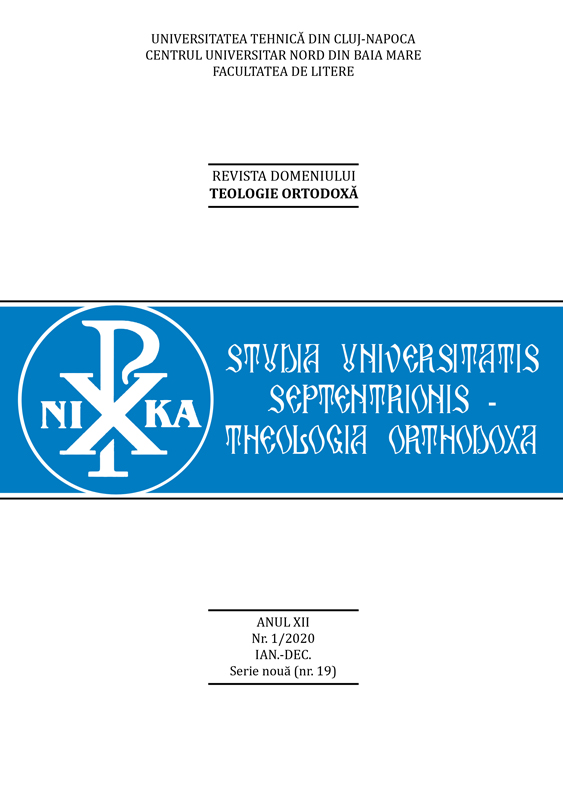
Sfântul Sinod al Bisericii Ortodoxe Române, în ședința sa de lucru din 25 octombrie 2018, a hotărât declararea anului 2020, în Patriarhia Română, ca „Anul omagial al pastorației părinților și copiilor” și „Anul comemorativ al filantropilor ortodocși români”. Totodată, Sfântul Sinod a aprobat și programul-cadru (teologic-educațional, cultural și mediatic) intitulat „2020 – Anul omagial al pastorației părinților și copiilor și Anul comemorativ al filantropilor ortodocși români”.
More...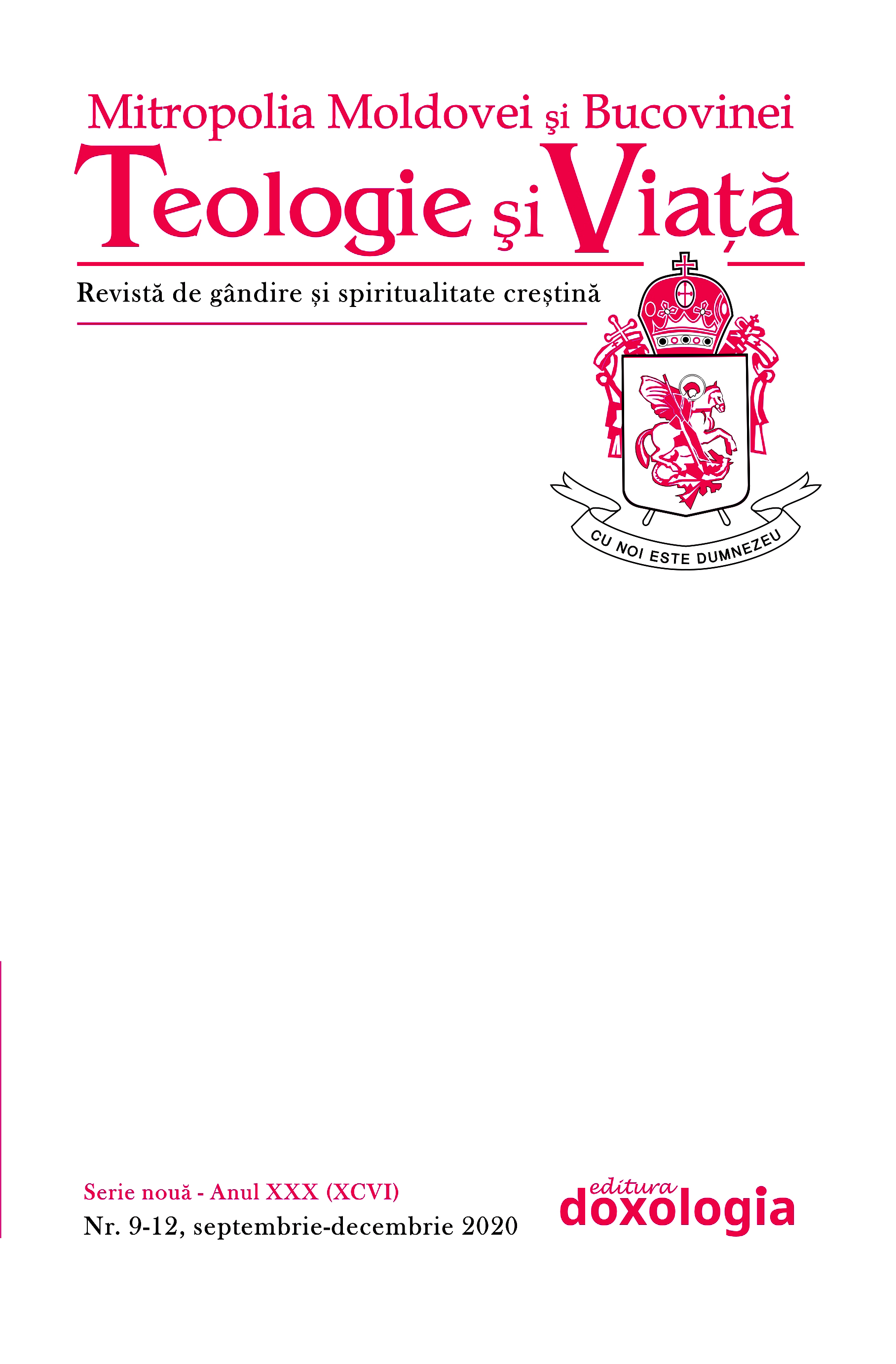
Keywords: inscriptions; early; Christian; Latin; Greek; practice; pedobaptism;
In this second part I have continued with the rendition of epitaphs translated fromLatin and ancient Greek and I have highlighted some monumental inscriptions whichdecorated baptisteries and contiguous chapels. The construction of catacombs, the works ofart found inside them, the inscriptions on tombs all come together as proofs of the simplicityof faith, the purity of the doctrine, the force of sentiment, the changing of life formost of the members of Christ’s church from early centuries. A light had come into theworld, the Light of the world – Christ our God, and the dark passages of cemeteries wereenlightened by it and shined. The epitaphs also reveal the fact that the Holy Anointmentwas being performed immediately after baptism and that godfathers were also witnesses toit. Thanks to epitaphs we have the certainty that the anointment had taken place immediatelyafter baptism in a special part of the baptistery called consignatorium. We knowthat the gifts of baptism are numerous. Although many believe that the only gift itoffers is the forgiveness of sins, the first Christians baptised children not only for thisreason but also in order for them to receive the gifts of holiness and legitimation, so thatthey could become sons of God and dwellings of the Holy Spirit. If they are not baptisedthey cannot receive the Holy Communion and therefore their most perfect union withGod in this world cannot be achieved. Apart from this, as some Christian historiansand theologians underline, the high rate of mortality among new-borns in the ancientworld, something that Christian inscriptions painfully illustrate, encouraged the practiceof baptism shortly after birth, as an assurance, no matter what the future was holding.The inevitable conclusion that we can draw from these truths is that, since one of theeffects of baptising young children is that though it they become members of theChurch, in other words parts of the mystical body of Christ, united with Him, their head,and can receive the Holy and Godly Communion, if these benefits are not bestowedupon them, they risk not getting into the kingdom of Heaven. This is the strongestargument according to which young children and new-borns were baptised.
More...
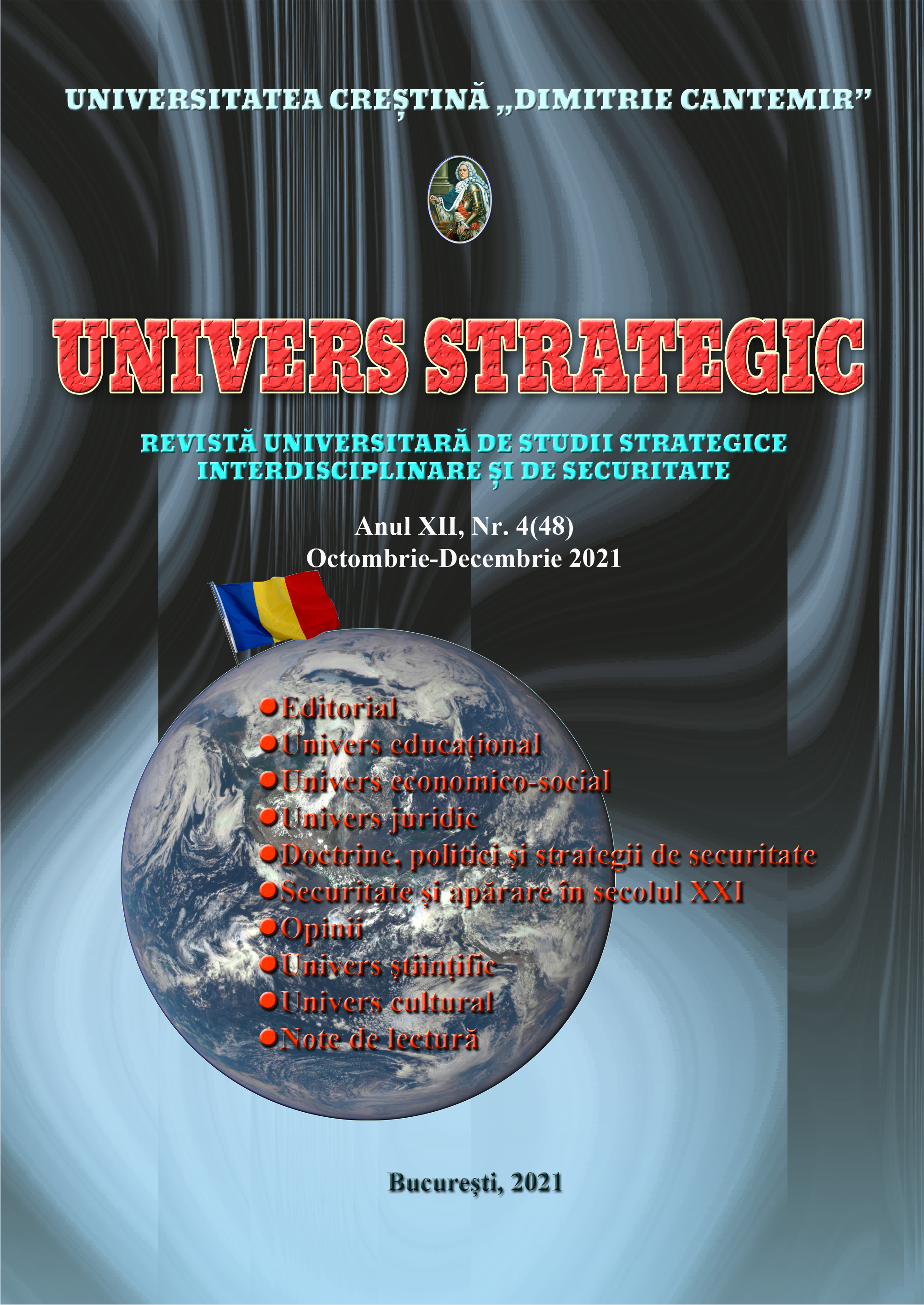
Keywords: School; children; drowning; water safety; knowledge;
Background: Bangladesh is adversely vulnerable for frequent natural disasters & hazards like floods, droughts, cyclones, river erosion, tidal and storm surges etc. To adapt with recurrent disasters, the school students to be needed for receiving water safety messages to cope with environmental impact of Barishal regions. Methods: During 2018-19, the educators were conducted in 266 schools where 19,038 students were participated smoothly to adopt essential water safety knowledges concerning about climate resilience mechanisms. The total number of 2,908 students were attended on pre-test session where 44.29% boys and 55.71% girls were partcipated and 2,885 students were taken part in the post-test session where 48.49% boys & 51.51% girls were attended to compare with their significant change of knowledge. Results: Have shown findings of pre-test and post-test session, 31% & 41.6% participants focused on step out of their depth, 11.3% & 33.5% respondents replied to hurt yourself on a dangerous object and 5% & 18.2% students said that they might be caught in weeds to check the depth of the water. Again, 20.7% & 38.8% students told not to enter the waterbody lonely and 11.5% & 27.7% respondents answered that they might want help from others. 7.9% & 24.4% participants emphasized not to enter the waterbody alone because anybody could help the person if they get into difficulty the waterbodies. Yet, 7.6% & 17.5% attendees said that lifejacket means it seems usually brightness color. 31.9% & 44.1% respondents mentioned that lifejacket has kept them afloat if they fall into the water and 7.5% & 34.3% students replied to keep their head above of the water. The 22.1% & 34.3% participants told to inform anybody where they were going and 10.7% & 28.2% respondents replied to inform anybody what they were doing. 5.4% & 20.1% attendees emphasized to inform anybody when they would return and 11% & 16.8% students mentioned that they informed anybody the root would be take there and back. Finally, 26.8% & 44.5% students mentioned to use a long object for reaching them, 14.2% & 43.1% respondents replied to throw them a floating object and 7.1% & 19.3% participants told to go and get help from others. Conclusion: Water safety knowledge delivery is important for school-aged children. It increases existing knowledge of students through learning by sharing with their parents. Initiatives from concern ministries of government to be needed for scaling up the proactive intervention in disaster prone areas.
More...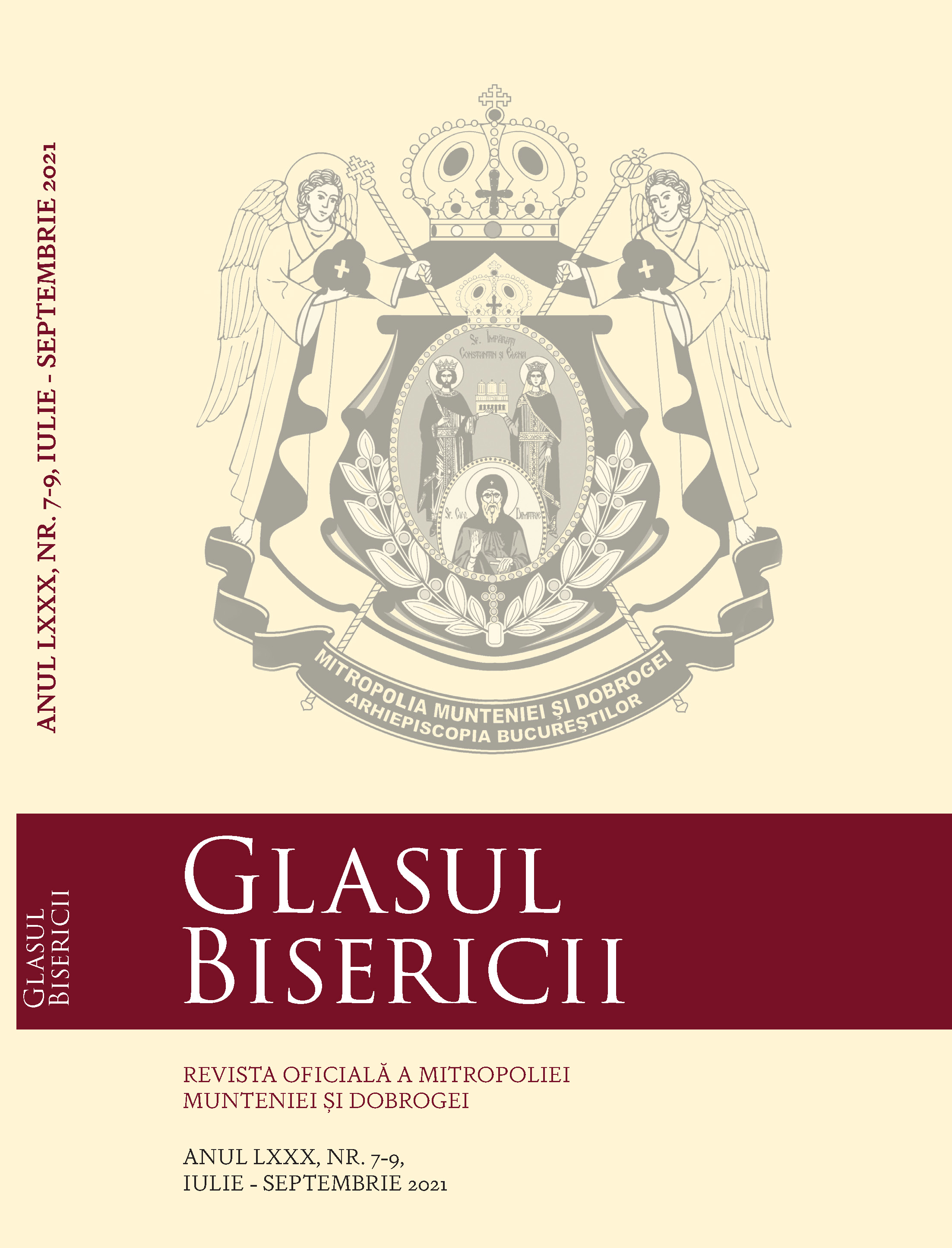
Keywords: sacred music; Church; spiritual life; Holy Fathers; Christian education;
Since the beginning of the Church, chant has played a pivotal role in its liturgic and communitarian activity. Throughout time, chant has constituted an efficient mechanism of Christian education because of its eminent theological message of ingraining a cult life of praying, being also an instrument for combating heresy and every other teaching that is strange to the Christianity found in the Church and to the Christian community. By selecting and substantiating certain elements of the profane through the minds of the Holy Fathers, the Church managed to create new musical and literary forms in order to express its teachings. The Romanian Church assumed the holy tradition of the Eastern Church by preserving and harvesting it up to present day. Education in Romania was initially developed and carried out in Church, and the singers and clerics of the church were at the same time teachers and guides for the Romanian people. Introducing a repertoire of songs found within the clerical space into the Romanian education curriculum, chants found in the Holy Liturgy, as well as Christmas carols, highly contribute to the development and enlightenment of the minds of children and youth, while also cultivating their spiritual purity.
More...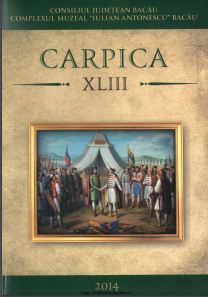
Keywords: Jewish communities; preschool children; public and private kindergartens; Bacău; Buhuși; Moinești; Jewish or Romanian language; kindergarten teachers; timetable; games; festivities;
This article presents the preoccupations of the Jewis communities from Bacău County towards the instruction and education of their own children, even from preschool. 4-6 year old children were enrolled in the public kindergartens in their home towns, where, next to the Romanian children, benefidet from the love and care of their kindergarten teachers who made them value the Romanian language, the imagination and the artistic talent. According to the private education legislation, in 1926, a kindergarten with classes taught in Jewis language was founded in Buhuși, in 1924 and in Moinești, in 1928.
More...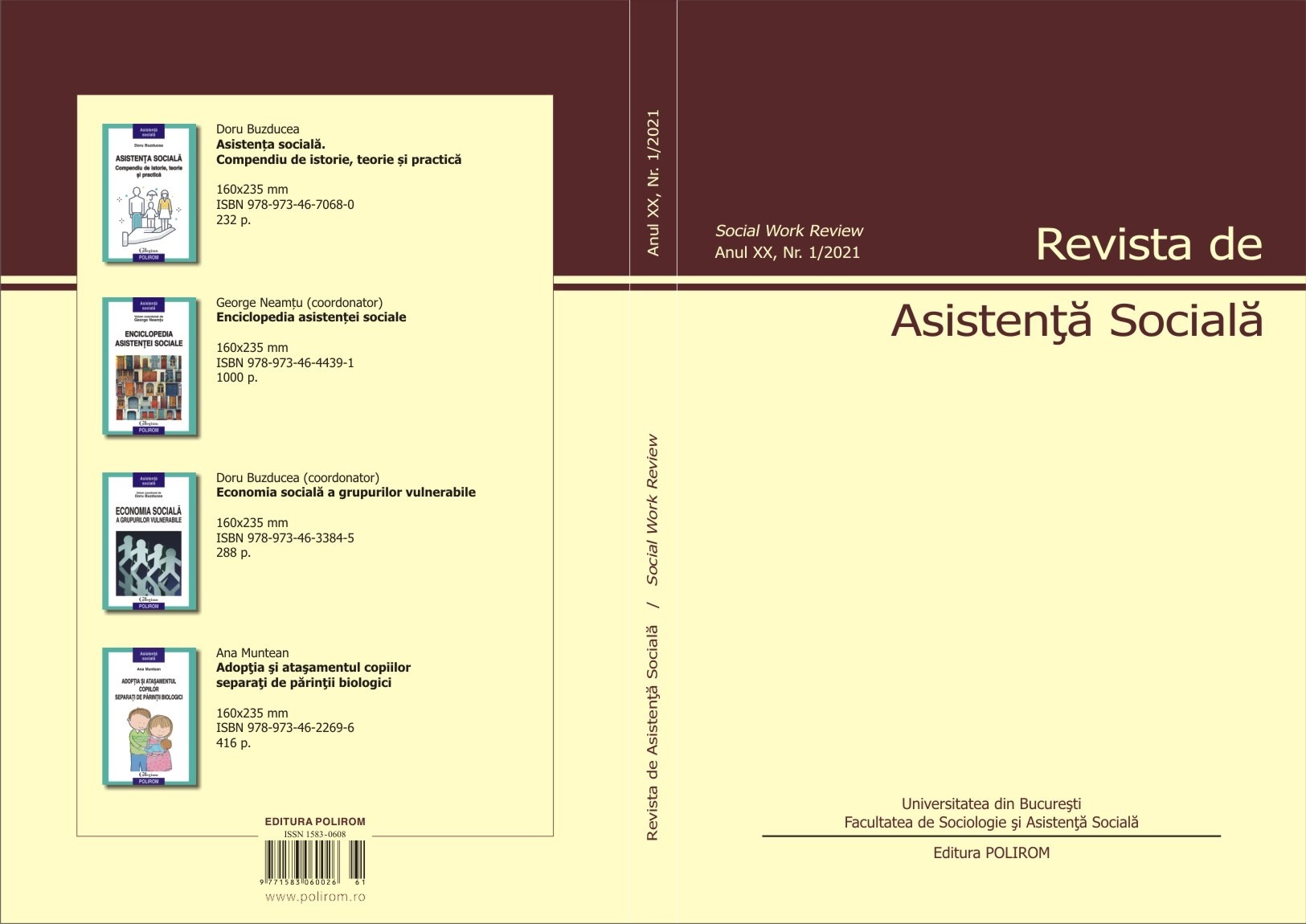
Keywords: children’s friendships; disabled children; emotional intelligence ;parental involvement;
Parental social practices play a decisive role in children’s social network formation and in friendship development in children. The aim of the present study was to investigate the mediator role of parental involvement in the development of friendships in children, in the relationship between parental emotional intelligence and the frequency of children’s meetings with friends or the number of friends, the latter being both endogenous variables. The moderator variable was the type of children, with or without disabilities. The participants in this research were 295 parents, who responded to questionnaires administered online, individually, about their or their children’s personal psychological or behavioral characteristics. The results indicated that parental involvement, in the development of friendships in children, totally mediates the relation between parental emotional intelligence and the number of friends children have or the frequency of meetings between friends. These results have implications regarding the training of parents to help the development of friendship in children with or without disabilities.
More...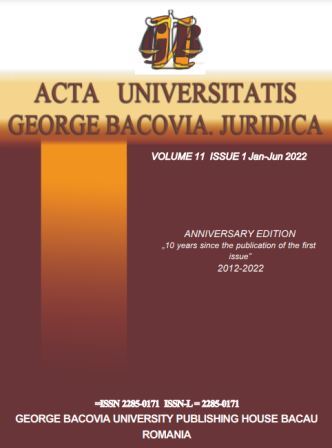
Keywords: personality of the criminal; sexual exploitation; victims; biopsychosocial traits;
The content of this article highlights the main psycho-social and criminological characteristics specific to persons who commit criminal acts related to the sexual exploitation of women and children. Thus, it is highlighted that the finding of the social-demographic, moral-psychological and role characteristics of the respective category of criminals has a special importance in organizing the process of preventing and combating the phenomenon of sexual exploitation of the most vulnerable categories of people in society - children and women.
More...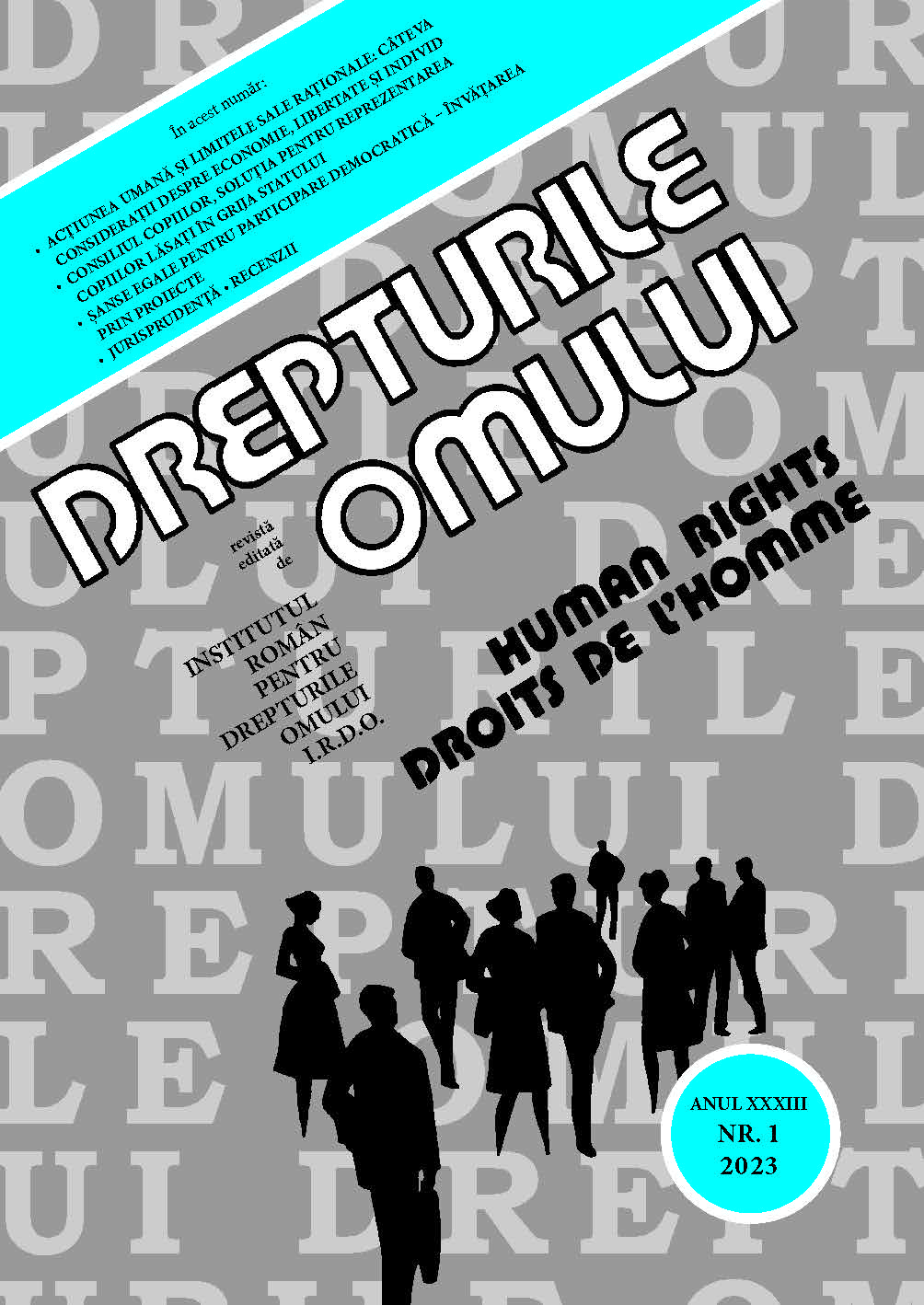
Keywords: Children’s Council; Voice of Abandoned Children; self-representation; representation structures;
The national analysis on how DGASPCs (General Directorates of Social Assistance and Child Protection) facilitate the self-representation process of children under state care is animportant and necessary endeavour in the context of child protection. In this regard, theattention given to the accurate representation of children within protective institutions is a key aspect in ensuring their harmonious development. It is important for children’s representation to be formalised, allowing for transparency and accessibility to all those who wish to be involved. Additionally, special attention must be given to developing independent living skills and preparing children for adulthood. This way, children can develop critical thinking abilities and express their opinions, enabling their involvement in decision-making processes.
More...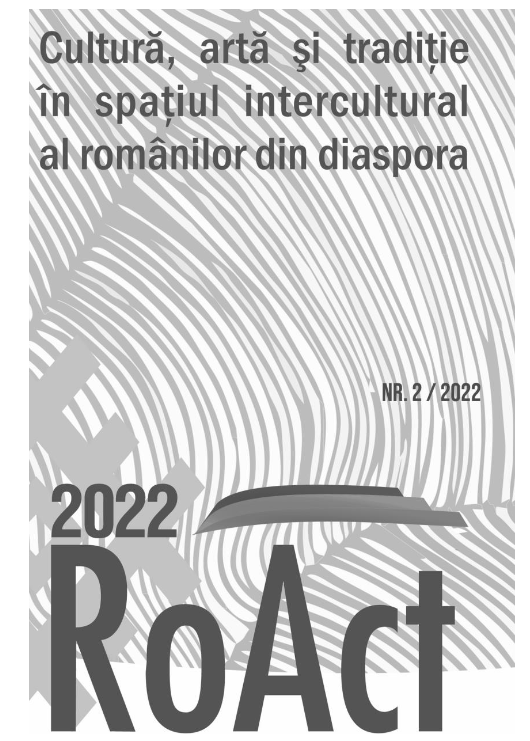
Keywords: Folklore; Musical education; Syncretism; Song;
Music is a universal language and the world of childhood and musical sounds are in a permanent symbiosis. Children always sing, at playgrounds, when they are happy, when they want to express an idea. A way of externalizing their feelings is, most of the time, vocal singing. The present paper wants to reinforce this idea but also presents some principles of music education systems, established worldwide, regarding the use of children's folklore for the formation of children's musical skills. In addition, the presentation of traditional songs for children, from different corners of the world, highlights the fact that the language barrier can be invisible in the children's world, thanks to a strong dimension existing in the song, namely, music.
More...